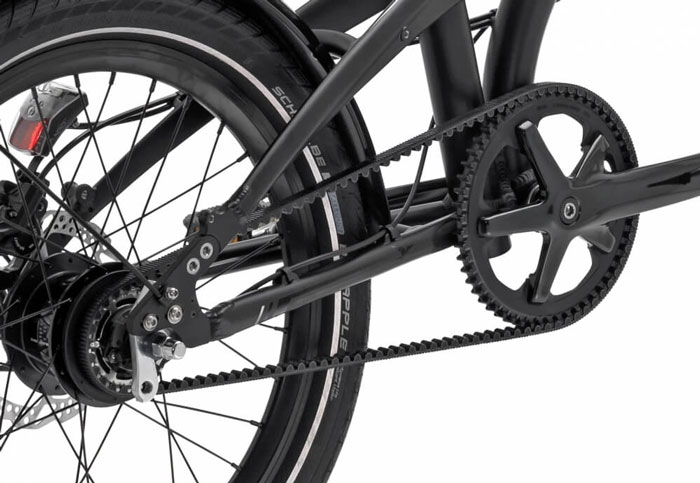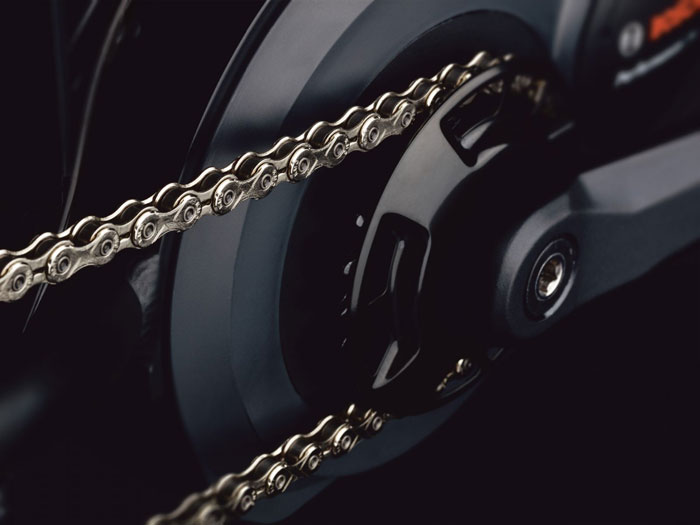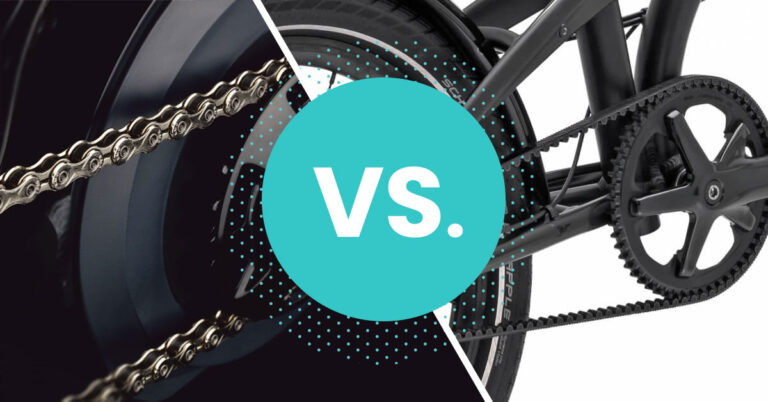There are a lot of different components on an electric bike, and each one plays a role in your riding experience. If you’re in the market for a new ride, you’re probably focusing on components like the motor, the seat, the tires, and any accessories you may want to add.
But one other component you need to think about is the drivetrain, or drive. There are two main drive types on electric bikes: belt drives and chains. Both have pros and cons, which can make it difficult to decide which one is right for you.
In this article, we’ll explore the major differences between belt drives and chains and provide you with recommendations on how to choose between the two.
About Chains and Belt Drives
Belt drives are widely used in industry and other sectors. They started being used on regular bicycles in the 1980s and are widely used in indoor cycling equipment.
Standard bicycles need to transfer a significant amount of force from the pedals to the rear wheel, and the classic metal chain drive has always been the standard for bikes because of its durability and efficiency. Chains are also still much more common than belt drives.
Belt drives became much more feasible once electric bikes started becoming popular and affordable. They were originally introduced in expensive e-bike models, but they are beginning to become more common in affordable ones. They are also growing in popularity as an easy-to-use, low-maintenance, and clean option compared with chains.
Bottom Line: Which is the Best Choice?
Most new and experienced electric bike riders will be well-served by a belt drive. Due to the low maintenance and ease of use, a belt drive is usually a better choice if you want an electric bike to get around town.
The technology has also progressed since belt drives were first introduced. Most belt drives are now quite durable, and they are more affordable than in previous years.
Some riders may still prefer chain drives if they want to use their bikes in more extreme conditions, such as off-road or in excessively hot or cold climates.
You may also want to choose a bike with a chain drive simply because you like its other features.
Choosing an Electric Bike with a Belt Drive
Belt drives work by attaching a belt to the bike’s motor, which then drives the belt around a pulley to spin the wheel. They work in a similar way to metal chains in that they have prongs that set into groves on the wheel hub.

Advantages of a Belt Drive on an Electric Bike
The biggest advantage of belt drives is that they require significantly less maintenance than chains. They are also cleaner because they aren’t lubricated.
In most cases, belt drives can be largely ignored, as they don’t require regular cleaning and lubrication. Most riders may only need to clean their belt drives occasionally if they get extremely dirty or clogged with mud, snow, or debris, as this could affect their ability to function.
Most belt drives on electric bikes also tend to ride smoother and more quietly than chains, which can develop grinding and creaking sounds if not maintained properly.
Finally, the presence of a belt drive usually means the bike you’re looking at has a more advanced mid-drive or hub motor. Belt drives are becoming more common on lower-priced electric bikes, but they could still indicate a higher-quality system.
Disadvantages of a Belt Drive on an Electric Bike
Belt drives provide fewer options when it comes to components — particularly for multi-speed drivetrains. Because of their rigidity and the high tension required to perform properly, belts cannot be shifted with derailleurs across multiple front chainrings or rear cogs like traditional bicycle chains. On e-bikes, belt drives are used in a single-speed configuration — one gear determined by the front and rear pulleys — or paired with an internally geared rear hub that provides a number of gears or a continuously variable transmission.
Compatibility can also be an issue. Belt drives can’t be broken in the middle like chains can, so you may have trouble transferring or replacing them. Different electric bike brands will likely use proprietary belts as well.
Belt drives may not be the best option if you live in a region that experiences temperature extremes, either. The tension on belt drives can change when the weather gets excessively hot or cold, leading to a loss of efficiency. If the drive accumulates wet snow or ice, it could jam up.
Belt Drive Pros & Cons
Pros
- Far less maintenance
- Cleaner
- A quieter ride
- Durable carbon fiber-reinforced rubber
- Used in more advanced electric bikes
Cons
- Fewer options for geared drivetrains
- Proprietary products aren’t as easily replaced
- Problematic in extreme climates
- Can be more expensive
Choosing an Electric Bike with a Chain
Most people are already familiar with the classic bike chain. If you’re switching to an electric bike after riding a traditional one for years, you may want to stick with a chain just because of the familiarity.

Advantages of a Chain on an Electric Bike
One of the major advantages of buying an electric bike with a chain is that they are much more widely available than belt drives. Chains can be found in any bike shop and are available at a variety of price points, so you can find the most suitable one for your e-bike. This makes it easy to find replacement parts if necessary.
Chains also have a much wider variety of compatible components available. You can find chainrings, cogs, derailleurs, shifters, and other components to customize your ride and make it as efficient as possible. With belt drives, you are limited to the single-speed gearing the manufacturer offers and the use of internally geared hubs, which have fewer options, can be quite heavy, and are more difficult to service than chain-and-derailleur geared drivetrains.
Lastly, there are just more e-bikes available with chains than with belts. You’ll have many more choices at every price level, but especially at lower MSRPs.
Disadvantages of a Chain on an Electric Bike
As we mentioned, the biggest disadvantage of getting an electric bike with a chain is the maintenance. Chains need to be cleaned and lubricated regularly to operate smoothly and quietly and avoid any damage or extra wear on the components. This can take time and effort away from simply enjoying your ride.
Oil lubricant is also messy, so there’s always a risk you’ll get a nasty oil stain on your favorite riding gear. Or you could use a wax-based product or other “dry” lubricant to avoid this.
Chains tend to be noisier than belt drives. Many people are accustomed to the sound of a bike chain, but the clinking metal might get annoying when you’re just trying to enjoy a peaceful ride.
Chain Pros & Cons
Pros
- Components are more widely available
- More customizable
- Available on a broader selection of e-bikes
Cons
- High maintenance
- Messy maintenance
- More noise
Choosing a Belt Drive or a Chain
If you fall in love with an electric bike because of its style, power, or utility, you may not care too much about whether it uses a belt drive or a chain. But it’s worth paying attention to if you are a serious e-bike enthusiast and you want the perfect bike for your needs.
Riders who are accustomed to regular chain maintenance may wish to choose a chain e-bike, especially if they want to have multiple gears without having to use an internally geared rear hub. .
But most electric bike users may prefer a belt drive because of its low maintenance and ease of use. If you want to use your electric bike to take leisure rides, run errands, or commute to work, you probably won’t want to have to worry about chain maintenance. This makes having a belt drive a big advantage.



